We’re thrilled to announce the latest features and enhancements included in our November release! These updates bring significant improvements, including critical tools for analysis, the ability to create immersive experiences with oriented imagery, and enhanced usability.
The integration of new analysis tools into Scene Viewer is elevating its capabilities to new heights. These enhanced features enable you to explore the relationships between 3D objects and reveal spatial data patterns within a 3D context.
Interactive Viewshed Analysis
One of the key new additions is the ability to perform viewshed analysis within 3D scenes interactively. You can identify visible and obstructed areas from specific viewpoints, making this feature particularly useful for industries such as security, urban planning, and real estate, where visibility plays a critical role.
You can adjust distance, tilt, heading, horizontal and vertical field of view. Multiple viewsheds can be generated to enhance coverage analysis, and results can be easily shared via web scene slides, improving collaboration and decision-making. Together with the other interactive analysis tools like measurement, elevation profile, line of sight, and slice, you will be able to explore 3D context and generate impactful geospatial analysis and communication.
Note: When placing viewsheds interactively, the viewshed is created with a 1.5-meter vertical offset from the scene.
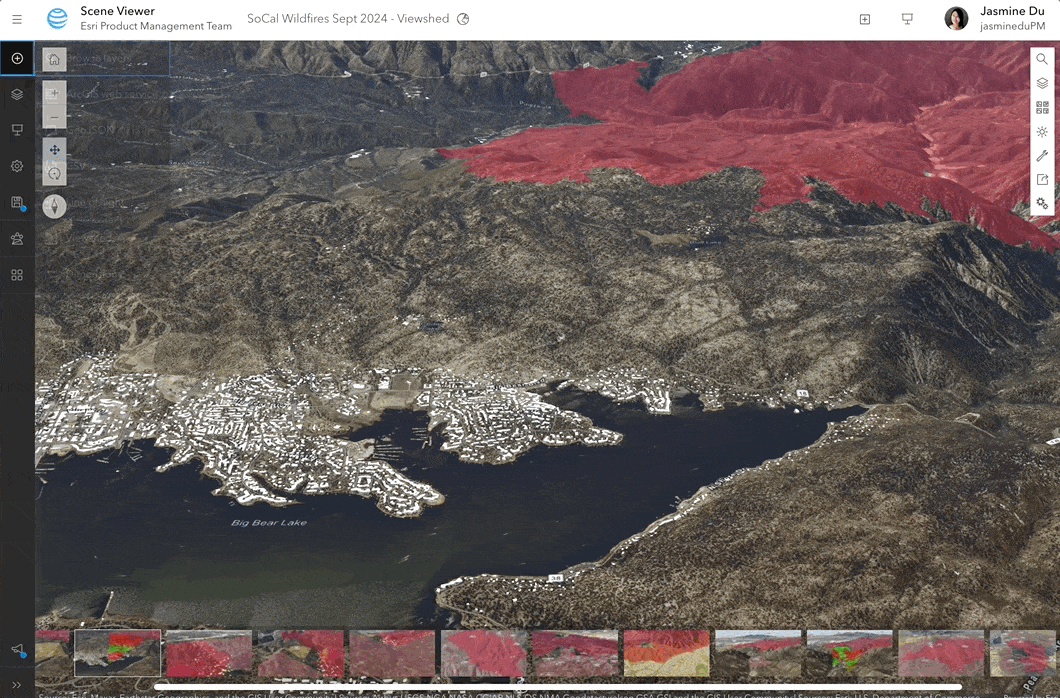
Web-based Spatial Analysis
Spatial analysis involves examining the locations, attributes, and relationships of spatial features to uncover patterns, trends, and insights. Scene Viewer now supports spatial analysis directly within the 3D web environment. This feature allows you to perform a variety of spatial analysis tasks seamlessly without having to switch between 2D and 3D interfaces.
In this release, we introduce 26 Feature Analysis tools and 13 Raster Analysis tools with the plan to support more in the future. Feature analysis is performed on vector data sources, which is coordinate-based data that represents geographic features using points, lines, and polygons. Imagery and raster data contains information that can be used to identify patterns, find features, and understand change across landscapes using Raster analysis tools. All of these asynchronous tools are performed on the server and will return accurate results as layers, which can be used in web scenes afterwards. We will have another blog to illustrate the details of how to best use the features.
Note: The administrator of your organization will need to grant you the required privileges to perform analysis. Learn more about licensing requirements from here.

Initial support of Oriented Imagery layer
An oriented imagery layer is a type of feature layer for visualizing oriented imagery in the context of 2D or 3D. You can bring a published Oriented Imagery layer to Scene Viewer to provide inspections and real-time situational awareness in 3D context. This release marks an initial step toward incorporating diverse image types, including drone imagery, street-level photos, and mobile captures, into your web scene. You will be able to configure your customized application with authorized web scenes that include the Oriented Imagery layer.
Below is an example of using ArcGIS Instant App 3D Viewer template to create and share a focused 3D oriented imagery web app, so you can quickly visualize imagery from an intuitive perspective in the context of 3D data (like integrated mesh or point clouds). This enhancement improves data visualization, streamlining decision-making processes and enhancing overall workflows. Additionally, we plan to introduce an explorer tool in the future to facilitate navigation through the imagery.
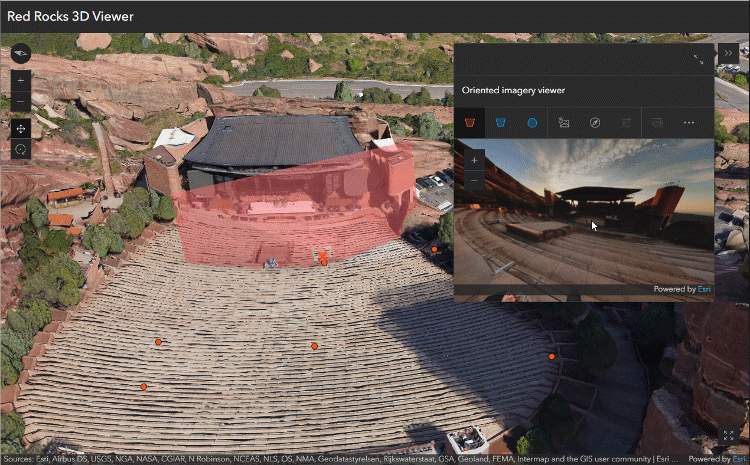
Support for Catalog Layer Properties and Styles
Over this June release, Scene Viewer introduced Catalog layer. In this release, we are adding layer properties for Catalog layers, including visibility controls, making it easier to work with spatial data directly in ArcGIS Online. This update will be particularly useful when working with large spatial datasets, allowing for quicker and more efficient data integration.
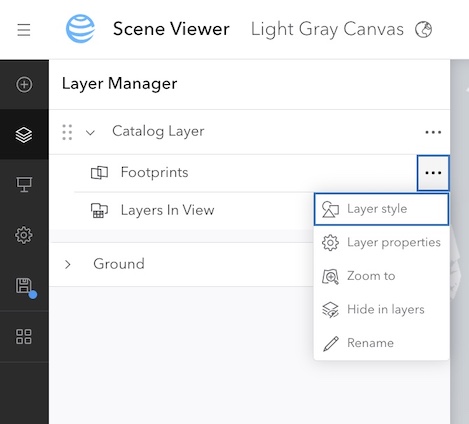
Set up default 3D Basemap at the Organizational Level
Organization administors can now set a default 3D basemap for Scene Viewer users, ensuring consistency across projects and users. Whether you’re handling large datasets or require a standardized 3D environment, this enhancement promotes a more efficient and cohesive workflow across your organization.
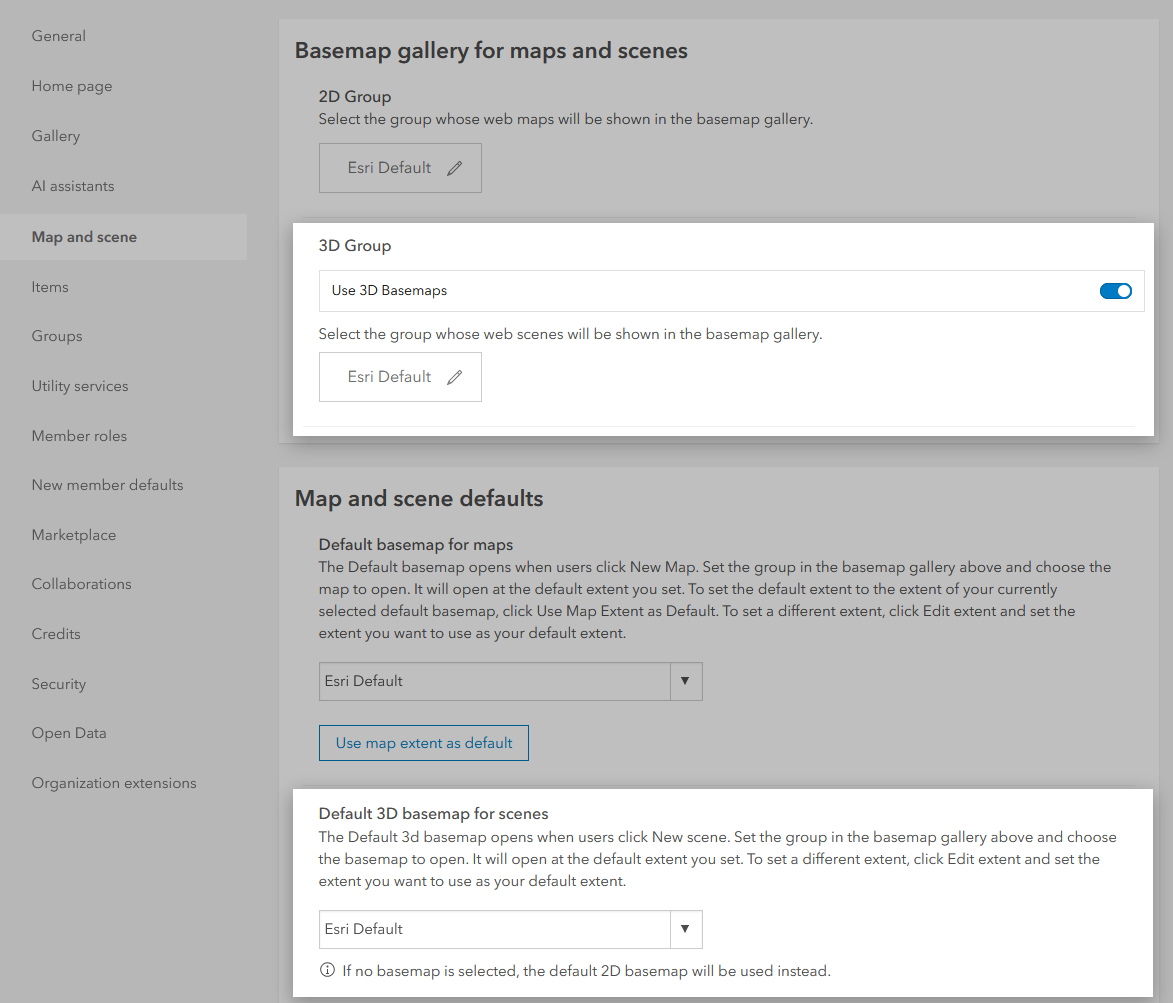
3D model upload enhancements
Another enhancement in this release focuses on improving the usability of the 3D model uploading feature. You can now easily create an empty 3D object scene layer in ArcGIS Online and upload your 3D models directly within Scene Viewer. Check this blog to learn more about the detailed updates.
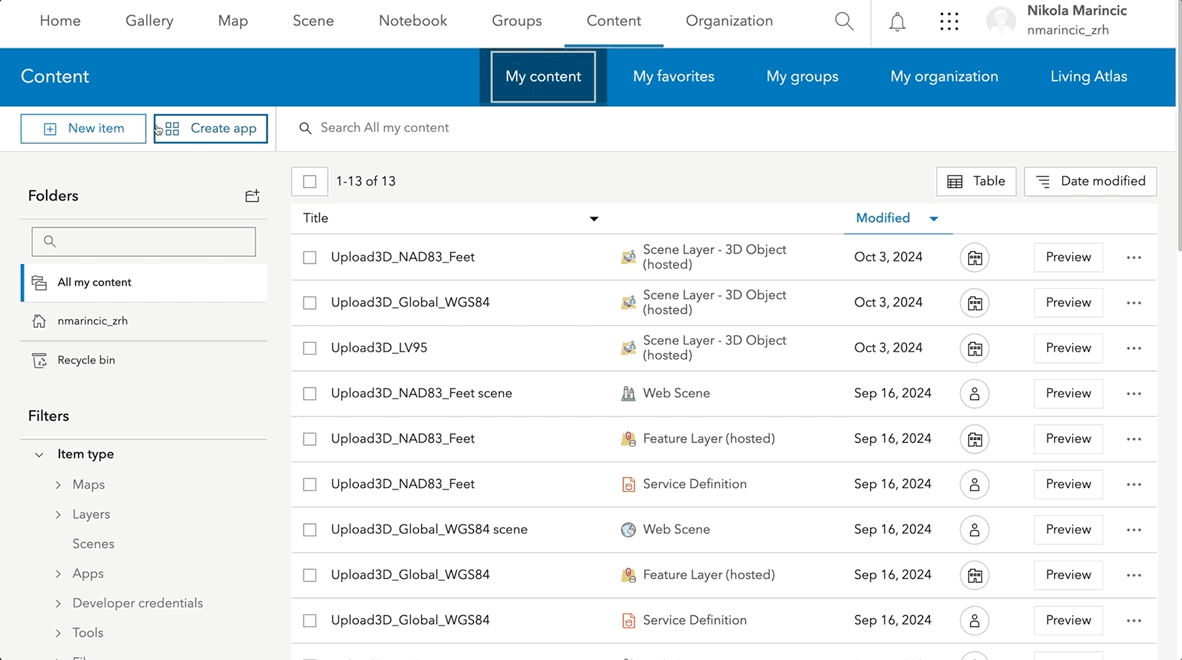
We believe these new features and enhancements will empower you to unlock even greater potential in the 3D context. Stay tuned for more updates and tutorials to help you make the most of the latest release.
Don’t hesitate to share your thoughts with us—we love hearing how you’re using Scene Viewer!

Article Discussion: